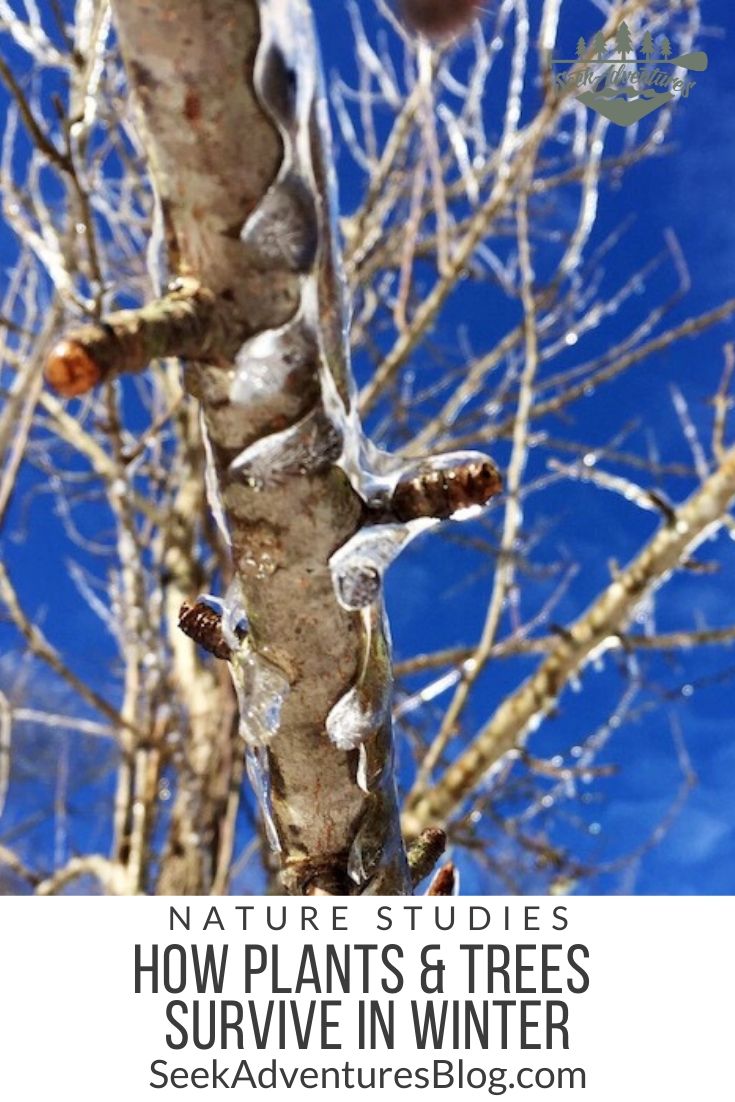Have you ever wondered about how plants and trees survive in the winter? What physical changes occur? What keeps a plant or tree from dying? Let’s find out!
I took science all through grade school and high school. In fact, I had some pretty great science teachers and I can recall the classes and lessons being both informative and engaging. But, as with many things in life, you have to use it or lose it and it’s time for a refresher on some plant science.

Annual vs. Perennial
Annual and Perennial are terms you will hear if you visit a garden center but these concepts can also be applied to many wild plants.
Annuals will grow from seed and the plant will die at the end of it’s growing season. Many wild plants will drop seeds that will germinate in the spring and grow into a new plant.
Perennials are plants that continue to grow year after year from the same root system. The plant may go dormant (similar to hibernation) in the fall and lose its leaves and fruit or flowers but they will return in the spring.
Deciduous vs. Conifers vs. Deciduous Confiers
Trees are generally classified as deciduous or conifer but I mention deciduous conifers because we have one that is very common here in Arkansas.

Deciduous trees lose their leaves yearly. Trees such as maple, oak, and sycamore are all deciduous trees. In many parts of the country, deciduous trees can produce spectacular colors in the fall as the tree stops producing chlorophyll and prepares to drop its leaves in order to conserve water and energy to survive the cold winter season.

Conifers are cone-bearing and have needles or scales that do not fall off seasonally. We often refer to these as evergreens and they include trees like pines, fir, cedar, and spruce. Conifers have small tubes that help carry water through the tree and the needles can help the trees to shed surface water and snow and protect against freezing.

Deciduous Conifers are not overly common in many parts of the country but they are very common here in Arkansas and throughout the southeast, so they definitely bear mentioning. The Bald Cypress tree is one that is native to the southeast and with its needle-like leaves quite resembles a typical conifer. However, in the fall, bald cypress needles will turn a brilliant copper color before falling off, much like a conifer. So these trees fall into the rare category of deciduous conifers!

How to Help Plants and Trees Survive Winter
Trees are designed to survive in some extreme situations but that doesn’t mean we can’t give our trees a little extra help. Especially with trees in your yard and around your home, it’s important to prepare them for the winter season.
- Properly water and mulch trees during the spring and summer. Over or under watering can add stress to a tree and make it more vulnerable to problems in the winter.
- When the leaves fall, check trees for any vines, dead limbs, or foreign objects that could place additional weight on branches during winter weather.
- Newly planted trees usually need added assistance through their first winter. Add additional mulch and braces or other supports to help the tree through the cold and wind that often comes with winter.
- Regular pruning can also help a tree from becoming overloaded with weight in the winter. Always remove dead or broken branches to prevent later storm damage.

Read Next
- How to Create a Winter Bird Tree | How To Make Birdseed Ornaments and Pinecones
- How to Recycle Your Christmas Tree into a Fish Habitat
- Nature and Winter | How Animals Survive Winter
- Nature and Winter | Why Does it Snow and Other Winter Weather Facts
- 10 Great Adventure Books To Read With Your Kids This Winter
- Take Your Kids For a Winter Walk
Pin this How Plants and Trees Survive in the Winter post to Pinterest to save it for later.

